How to Fix Error 0x80070021
Several Windows users are encountering the Error 0x80070021 when trying to copy a file from one location to another. Other users are seeing this error while trying to host a WCF service in an ASP.NET application. But in most cases, the issue is reported to occur when users try to manage Outlook data files (.pst and .ost).
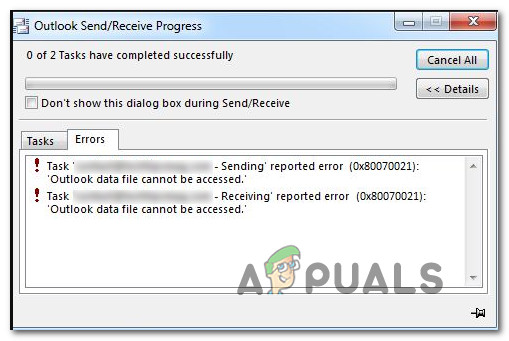
What is causing the Error 0x80070021 error?
We investigated this particular issue by analyzing various user reports and the repair strategies that are commonly being used to fix this problem. Based on our investigations, there are several different repair strategies that are known to trigger this error code:
- HTTP activation is disabled – If you’re getting this error while trying to host a WCF service in an empty ASP.NET application; in this case, the issue is most likely occurring because the host computer doesn’t have HTTP Activation enabled. To resolve this issue, you’ll need to enable the feature from Windows Features.
- The required ASP.NET version is disabled – This particular issue can also occur if the required ASP.NET version used by the application is not available on the host computer. If this scenario is applicable, you can resolve the issue by enabling the correct version from Windows Features.
- Outlook data is being used by another program – Certain add-ins or spam filters have the potential of keeping Outlook away even when the program is close conventionally. Whenever this occurs, a leftover process will end up triggering the error code once the Outlook data file is being modified. In this case, you can resolve the issue by closing the Outlook process.
- Search Email Indexer is installed – This error code is also commonly reported to appear due to a problematic Outlook Add-in called Search Email Indexer. Several affected users have reported that the issue was no longer occurring after they uninstalled the problematic add-in from Outlook.
- MS Office Communicator (Lyns) is conflicting with Outlook – Another possible culprit that will trigger this error code is Office Communicator or it’s successor Lyns. These two are known to leave background processes that will prevent the Outlook data file from being modified.
- The unknown process is conflicting with the Outlook data file – If the culprit that is causing the issue in your case is not on the usual’s suspect’s list, you can eliminate any 3rd party interference by booting your computer into safe mode.
If you’re currently struggling to resolve the very same error code, this article is going to provide you with several troubleshooting steps. Down below, you’ll find a collection of methods that other users in a similar situation have also used to either fix or circumvent the problem.
If you want to remain as efficient as possible, we advise you to follow the methods in the order that they are presented since they are ordered by efficiency and difficulty. One of them is bound to resolve the issue regardless of the scenario that is applicable.
Method 1: Enabling HTTP Activation from .NET Framework 4.5 Advanced Services (if applicable)
If you get this error message while trying to host a WCF service in an empty ASP.NET application, chances are the error message is appearing because the host computer doesn’t have the HTTP Activation enabled.
Several users that encountered the Error 0x80070021 in this particular scenario have reported that the issue was no longer occurring after they enabled the .Net Framework 4.5 Advanced Services using the Windows Features menu.
Note: This fix is confirmed to work on both Windows 10 and Windows 7 (as long as the current scenario is applicable).
Here’s a quick guide on how to do this:
- Press Windows key + R to open up a Run dialog box. Then, type “appwiz.cpl” and press Enter to open up the Programs and Features screen.

Typing in “appwiz.cpl” in the Run prompt - Once you get to the Programs and Features menu, click on Turn Windows features on or off from the vertical menu on the left.
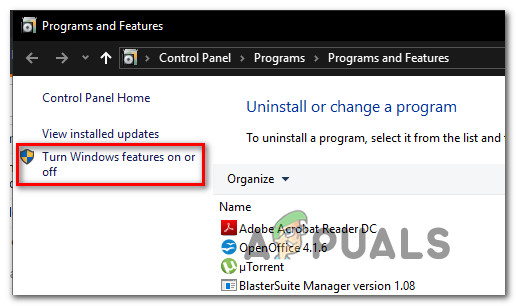
Turning Windows feature on or off - Inside the Windows Features screen, expand the .NET Framework Advanced Services whichever version you’re actively using and then expand the WCF Services settings.
- Once you get there, check the box associated with HTTP Activation and click Ok to confirm the changes.
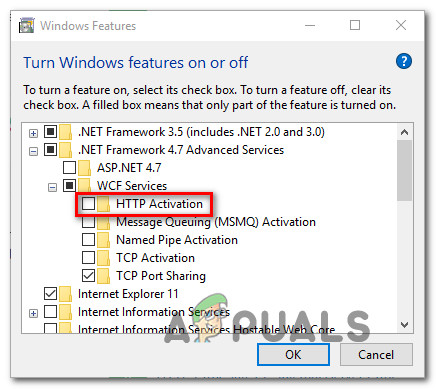
Enabling HTTP Activation - Restart your computer and see if the issue has been resolved at the next startup.
If you’re still encountering the Error 0x80070021 or this scenario was not applicable to your current situation, move down to the next method below.
Method 2: Enabling ASP.NET 4.5, 4.6, 4.7 (if applicable)
If you’re encountering the issue on Windows version older than Windows 10 in conjunction with IIS 8.5 or newer, chances are you will be able to resolve the issue by registering ASP 4.5 ASP 4.6 or ASP 4.7 via the Windows Features screen.
Several users for which this scenario have managed solve the Error 0x80070021 indefinitely after following the steps below and restarting their computer. Here’s what you need to do:
- Press Windows key + R to open up a Run dialog box. Then, type “appwiz.cpl” and press Enter to open up the Programs and Features screen.
- Once you get inside the Programs and Features screen, click on Turn Windows features on or off from the vertical menu on the left.
- Inside the Windows Features window, expand the Internet Information Services then expand Word Wide Web services.
- Expand the Application Development Features menu, then check the box associated with the ASP.NET that you’re using. Click Ok to save the changes.
- Restart your machine and see if the error code stops occurring once the next startup sequence is complete.
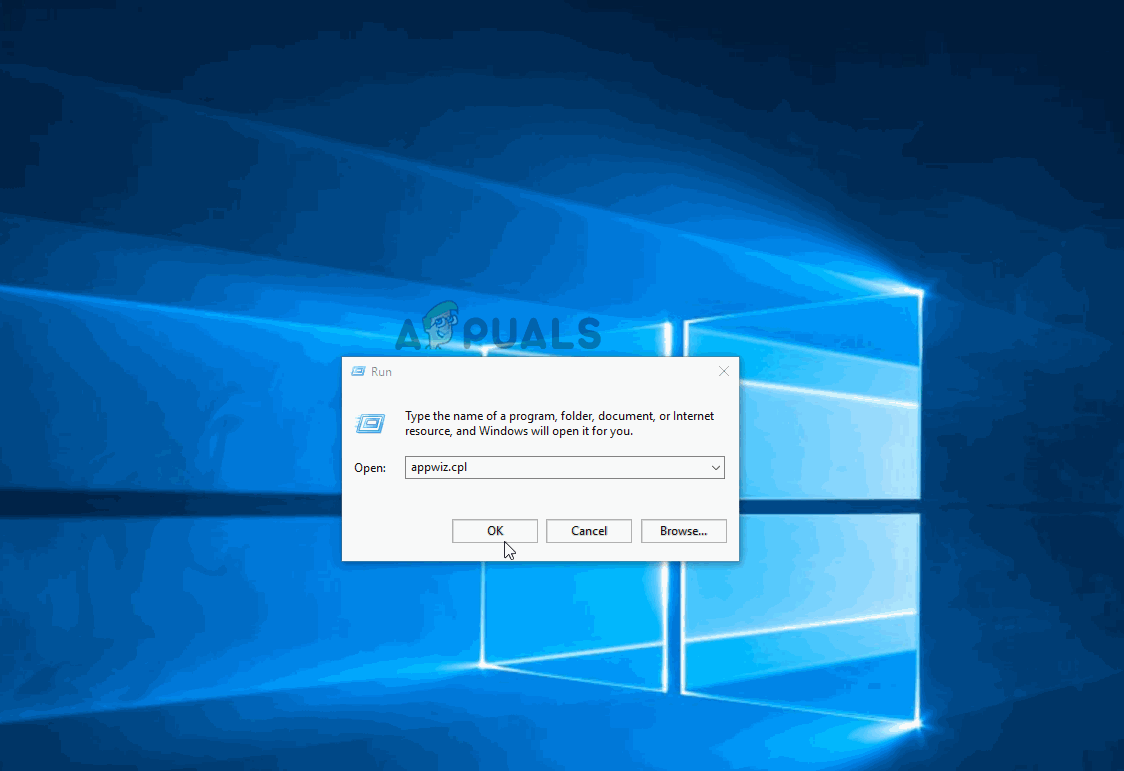
If the same error code is still occurring or you this method wasn’t applicable, move down to the next method below.
Method 3: Closing Outlook using Task Manager
If you’re seeing the Error 0x80070021 while trying to copy Outlook Data files to a different location (flash drive, OneDrive, different HDD,etc.) chances are the reason why your operating system doesn’t let you complete the process is that the file is still used by Outlook.
This happens because Outlook has a tendency to keep running in the background even after it’s being closed conventionally. In most cases, older Outlook versions are reported to behave like that.
Note: if you’re using Cloudmark DesktopOne’s spam filter, close the program before attempting the steps below.
Here’s a quick on ensuring that the Outlook service is closed:
- Close Outlook conventionally (by clicking the X icon in the top-right corner of the screen).
- Press Ctrl + Shift + Esc to open up Task Manager.
- Inside Task Manager, scroll down through the list of background process and see if you can find service belonging to Microsoft Outlook.
- If you find a process that belongs to Outlook, right-click on it and choose End Task to close it.

Ending processes associated with Outlook If you’re still encountering the 0x80070021 error while trying to copy or move Outlook data files, move down to the next method below.
Method 4: Uninstalling the Search Email Indexer
Another potential culprit that might be causing this issue is a COM Add-In that is known to prevent Outlook from closing down completely. Essentially, it forces Outlook to leave behind a background process even when the main application is closed. This ends up conflicting with certain chores and is known to trigger the 0x80070021 error.
Several users struggling to resolve this particular issue have managed to fix it after uninstalling a certain Outlook add-in called Search Email Indexer. But keep in mind that there might be other add-ins that will end up causing the same behavior.
Here’s a quick guide on uninstalling Search Email Indexer or a similar add-in:
- Open our Outlook application and click on File from the ribbon bar at the top. Then, click on Options from the vertical menu on the left.
- Inside Outlook Options, select the Add-ins tab from the vertical menu on the left section of the screen.
- Inside the Add-in Options screen, go to the bottom section of the screen and click on the drop-down menu associated with Manage.
- Select COM Add-ins and click Go to see the list of installed Add-ins.
- From the COM Add-in screen, select Search Email Indexer (or a different add-in that you want to uninstall and then click on Remove to get rid of it.

Method 5: Uninstalling MS Office Communicator (if applicable)
Another possible reason that might trigger the 0x80070021 error is a nearly extinct application called Microsoft Office Communicator. This unified communication client where users could initiate conversations and conduct live videos is no longer supported Microsoft, but some users still have it installed on their PCs.
But having this obsolete application on your computer can end up conflicting with newer Office applications, particularly with Microsoft Outlook. Several users that have been encountering this issue have reported that the 0x80070021 error was no longer occurring after they uninstalled MS Office Communicator from their computer.
Update: MS Office Communicator’s successor, MS Lync is also known to cause the exact same issue. If you have this application installed uninstall it using the steps below.
Here’s a quick guide on how to do this:
- Press Windows key + R to open up a Run dialog box. Then, type “appwiz.cpl” and press Enter to open up the Programs & Features.

Type appwiz.cpl and Press Enter to Open Installed Programs List - Inside the Programs and Features, scroll down through the list of applications to locate Microsoft Office Communicator application.
- Right-click on Microsoft Office Communicator and choose Uninstall. Then, follow the on-screen prompts to complete the uninstallation.

Uninstalling Microsoft Office Communicator - Restart your computer and repeat the action that was previously causing the 0x80070021 error. If the same issue is still occurring, move down to the next method below.
If the issue is still occurring, move down to the next method below.
Method 6: Booting into Safe Mode
Several affected users that have managed to resolve the 0x80070021 error by booting into Safe Mode. While in Safe Mode, chances are you will be able to move, delete or modify the Outlook Data File without seeing the same error code.
Here’s a quick guide on booting your computer into Safe Mode:
- Start by pressing Windows key + R to open up a Run dialog box. Then, type “ms-settings:recovery” and press Enter to open up the Recovery tab of the Update & Security settings page.
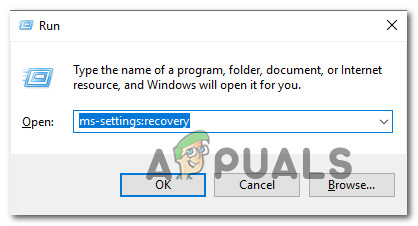
Accessing the Recovery tab - Once you get inside the Recovery tab, click the Restart now button under Advanced startup. Once you confirm, your machine will restart directly into the Advanced Startup menu.

Accessing the advanced startup menu - Once your machine boots back up into the Advanced Startup menu, go to Troubleshoot > Advanced Options and click on Startup Settings.
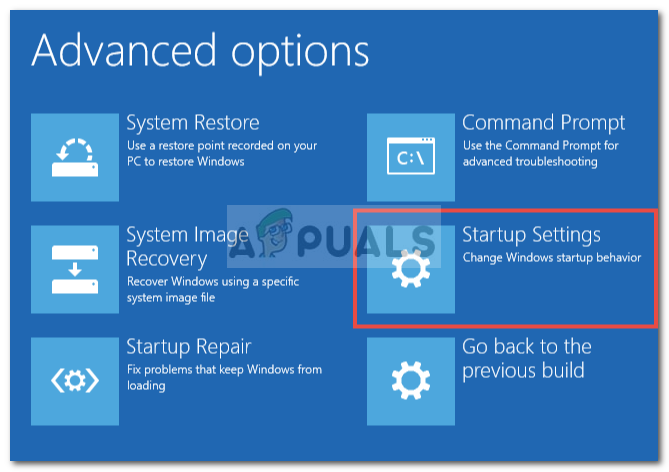
Windows 10 Advanced Options - After going through this menu, your computer will restart once more directly into the Startup Settings menu. Once the Startup Settings menu is visible, press the F4 key or 4 key to start your PC in Safe Mode.

Pressing F4 or 4 key to start the computer into Safe Mode - Once the startup sequence is complete and your computer successfully boots into Safe Mode, repeat the operation that was previously triggering the 0x80070021 error and see if the issue has been resolved.




